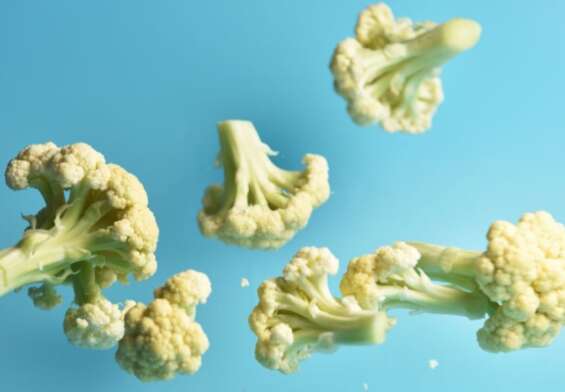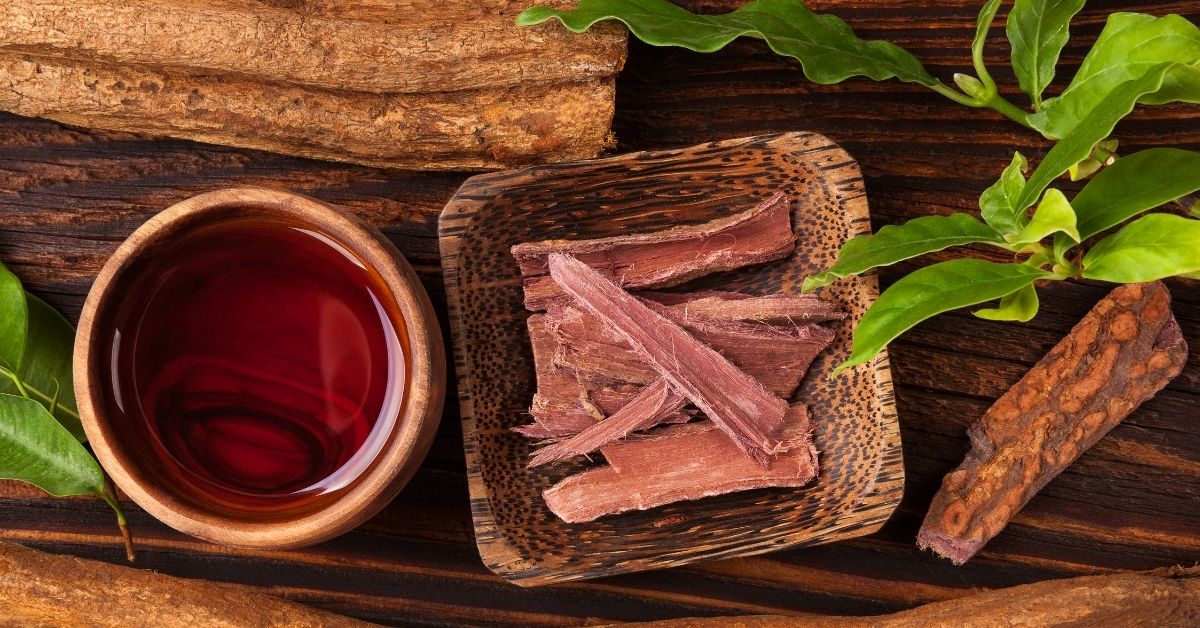
Low-Fodmap Diet: Relieve Digestive Issues Through Diet
Low-Fodmap Diet is a dietary approach that has been gaining a lot of attention in recent years as a way to reduce digestive symptoms such as bloating, gas, abdominal pain, and diarrhea. The Low-Fodmap Diet involves avoiding certain types of carbohydrates, called Fodmaps, which can be difficult for some people to digest. The diet has been found to be beneficial in reducing symptoms associated with Irritable Bowel Syndrome (IBS), as well as other gastrointestinal disorders. In addition to helping alleviate digestive symptoms, the Low-Fodmap Diet can also help you maintain a healthy weight. This diet is not a “one-size-fits-all” approach and should be tailored to your individual needs. It is important to work with a dietitian or nutritionist to ensure you are following the diet correctly.
What is the Low-Fodmap Diet and How Can it Help with IBS?
The Low-Fodmap Diet is basically a way of eating that reduces bloating, gas and other IBS symptoms. It stands for: Low Fermentable Oligosaccharides, Disaccharides, Monosaccharides and Polyols.
Basically, it’s a diet that limits certain carbohydrates that can be hard for your gut to digest. These carbohydrates are found in common foods like wheat, onions, milk, garlic, beans and so on.
If you’ve ever had to run to the bathroom after eating a certain food, the Low-Fodmap Diet might be the answer to your prayers. It can help reduce those annoying (and sometimes embarrassing) IBS symptoms.
So, how does the Low-Fodmap Diet work? Well, it involves a three-step process. First, you eliminate all high-Fodmap foods from your diet. Then, you gradually reintroduce these foods one at a time, to figure out which ones cause your IBS symptoms. Finally, you create a plan that works for you and your gut.
So if you’re looking for an easy way to manage your IBS symptoms, you might want to try the Low-Fodmap Diet. It’s a great way to put your gut in a better mood and have a lot less bathroom trips!
Low-Fodmap Diet Grocery Shopping Tips
Don’t be fooled by fancy packaging! Just because something’s brightly colored and has a picture of a smiling family enjoying a meal on the front, doesn’t mean it’s low-FODMAP friendly. Check the ingredients list carefully!
Get creative with your substitutions. Try making your own low-FODMAP alternatives to your favorite dishes. For example, use lettuce wraps instead of wheat-based tortillas or gluten-free pasta instead of regular pasta.
Don’t be afraid to think outside the box. Look for ingredients you’ve never used before, like quinoa, chia seeds, and buckwheat.
Stock up on snacks. Low-FODMAP snacks like rice cakes, popcorn, and rice crackers are great for when you’re on the go.
Make a list and stick to it. Make sure to plan out what you’ll need for the week ahead so you don’t end up with a fridge full of random ingredients that don’t go together.
Stick to the perimeter. The outer aisles of the grocery store are usually where you’ll find the freshest, most nutritious ingredients.
Don’t be afraid to experiment. You never know what delicious recipes you might come up with by trying different combinations of ingredients.
Have fun! Shopping for low-FODMAP groceries can be a great way to explore new foods. Enjoy the process and take pride in your new dietary lifestyle.
The Benefits of Following a Low-Fodmap Diet
Are you feeling bloated and gassy after meals? Are you often feeling sluggish and uncomfortable? If so, then you may want to consider giving the low-FODMAP diet a try. This diet is perfect for those who suffer from digestive issues such as irritable bowel syndrome (IBS) as it focuses on reducing certain types of carbohydrates that can be hard on the digestive system.
So, what’s so great about the low-FODMAP diet? Well, firstly, it can help reduce bloating, gas, and abdominal pain. By eliminating foods that can be hard to digest, such as wheat, garlic, and onion, you can make your digestion much smoother. Secondly, the low-FODMAP diet is a great way to reduce inflammation in the gut, which can help reduce digestive issues such as IBS. And thirdly, following a low-FODMAP diet can help you lose weight, as it is naturally low in calories and fat.
But the best thing about the low-FODMAP diet is that it can be really fun! You don’t have to give up all the delicious foods you love; you just need to find suitable substitutes. For example, instead of wheat, you can try gluten-free options such as spelt, millet, and quinoa. And instead of garlic and onion, you can use chives and ginger for flavor.
So, if you’re looking for a way to reduce bloating, gas, and abdominal pain, then give the low-FODMAP diet a try. It’s a great way to improve your digestive system and make sure you feel your best. Plus, with a little creativity, you can still enjoy all your favorite meals — minus the discomfort.
Low-Fodmap Diet Recipes for Breakfast, Lunch and Dinner
Breakfast
Start your day off right with a delicious low-FODMAP breakfast! Try this Breakfast Burrito Bowl – with scrambled eggs, potatoes, bell peppers, and a sprinkle of cheese, all wrapped up in a delicious burrito bowl. Yum!
Lunch
For lunch, why not try a Low-FODMAP Chicken Salad Wrap? This wrap is full of crunchy veggies, juicy chicken, and a homemade honey mustard dressing, all wrapped up in a delicious wrap. Enjoy!
Dinner
End your day on a high note with a Low-FODMAP Pizza! Top your pizza with all your favorite low-FODMAP ingredients, such as mushrooms, bell peppers, and olives. Then, enjoy a slice (or three) of your yummy creation. Yum!
How to Follow a Low-Fodmap Diet While Eating Out
Eating out while following a low-Fodmap diet can feel like a daunting task. However, it doesn’t have to be if you know a few tricks! Here are a few tips to help you navigate the restaurant scene like a pro:
Don’t be afraid to ask questions. You know your body best, so don’t be afraid to ask about ingredients or how dishes are prepared. This will help you make the most informed decision possible.
Make substitutions. Most restaurants are willing to accommodate dietary preferences, so don’t be afraid to ask for substitutions like gluten-free bread or a low-Fodmap sauce.
Stick to the basics. Try to find dishes that don’t have too many ingredients and stick to proteins like meat, poultry, fish, and eggs.
Avoid the “no-no” ingredients. Common ingredients like garlic, onions, and wheat are all high in Fodmaps and should be avoided.
Get creative with sides. Most restaurants offer a variety of side dishes that are low in Fodmaps, such as mashed potatoes, steamed vegetables, or a side salad.
Enjoy the beverage menu. Many drinks are naturally low in Fodmaps, including tea, coffee, and most alcoholic beverages.
With these tips, you’ll be able to enjoy a meal out without compromising your low-Fodmap diet. Bon appétit!
Understanding the Role of Fructans in the Low-Fodmap Diet
Ah, the low-FODMAP diet! It’s the latest diet trend that has everyone talking. But what exactly is a low-FODMAP diet? Well, it’s a diet that eliminates certain carbohydrates known as FODMAPs, which stands for Fermentable, Oligosaccharides, Disaccharides, Monosaccharides, and Polyols. One of the major FODMAPs to be aware of is fructans.
So, what are fructans and why are they so important when it comes to the low-FODMAP diet? Fructans are a type of carbohydrate found in many foods, including wheat, garlic, onions, and certain fruits and vegetables. They are also found in many processed foods like bread, pasta, and baked goods. Fructans are difficult for the body to digest because they are not completely broken down in the small intestine. As a result, they can cause digestive problems like gas, bloating, and abdominal pain.
That’s why they are eliminated on a low-FODMAP diet. By removing fructans from your diet, you can help reduce your symptoms and improve your digestive health. Of course, it’s important to note that not all fructans are bad. In fact, some fructans are beneficial for your gut health and can help promote the growth of beneficial bacteria in your digestive tract.
So, if you’re considering the low-FODMAP diet, it’s important to understand the role of fructans in your diet. While it may seem daunting, it’s actually quite easy to do with a little bit of knowledge and a sense of humor! With the right information and a bit of humor, you can make the low-FODMAP diet work for you and find relief from your symptoms.
Low-Fodmap Diet Tips for Eating Healthier
Start your day off right with some low-FODMAP breakfast ideas. Try a smoothie made with almond milk, banana, and some low-FODMAP berries like strawberries or blueberries.
Instead of grabbing a sandwich for lunch, why not try a low-FODMAP wrap? Just substitute the bread for lettuce and you’re good to go.
When it comes to snacking, why not go for something with a bit of crunch? Try some low-FODMAP nuts, like almonds or walnuts.
Don’t forget to get your greens! Try some low-FODMAP veggies, like spinach or kale, instead of the usual suspects.
When it comes to dinner, why not make it a low-FODMAP fiesta? Try some quinoa with some low-FODMAP veggies, like bell peppers and zucchini.
And for dessert, why not try a low-FODMAP version of a classic treat? Try a banana split made with almond milk ice cream, sliced bananas, and some low-FODMAP chocolate chips.
With a few simple swaps, you can make sure you’re eating healthier while still enjoying delicious food. Bon appétit!
Low-Fodmap Diet Meal Planning Ideas
Are you ready to take on the low-FODMAP diet? We know it can be a daunting task to figure out what to eat. But don’t worry, we’ve got your back! Here are some meal planning ideas to help you navigate this new way of eating.
Breakfast: Start your day off with a bowl of low-FODMAP oatmeal. Top it off with a drizzle of honey and some almond butter. Or, make a batch of overnight oats with chia seeds, almond milk, and a sprinkle of cinnamon.
Lunch: Whip up a delicious low-FODMAP salad with leafy greens, grilled chicken, and a homemade vinaigrette. Or, make a batch of veggie-packed quinoa bowls.
Dinner: Give your taste buds a treat with a low-FODMAP pesto pasta. Top it off with roasted vegetables and a sprinkle of vegan Parmesan cheese. Or, try a low-FODMAP stir-fry with your favorite veggies, tofu, and a homemade teriyaki sauce.
Snacks: Satisfy your cravings with low-FODMAP crackers and hummus. Or, make a batch of energy balls with oats, almond butter, and dark chocolate chips.
No matter what you eat, remember to have fun with your low-FODMAP diet!
The Pros and Cons of the Low-Fodmap Diet
The Low-Fodmap Diet: Pros
- It can help reduce digestive distress and improve symptoms of irritable bowel syndrome – this diet is becoming increasingly popular due to its success in alleviating digestive discomfort and improving IBS symptoms.
- It’s an evidence-based approach – this diet is based on scientific research and is supported by the medical community.
- It can improve your quality of life – by reducing symptoms of IBS, this diet can help you enjoy life more and be more productive.
The Low-Fodmap Diet: Cons
- It’s complicated and time consuming – the low-Fodmap diet requires careful monitoring of food intake and can be difficult to stick to.
- It can be expensive – due to the restrictive nature of the diet, some of the foods you need to eat can be expensive.
- It’s not a long-term solution – this diet is only intended to be used as a short-term fix, not a long-term solution.
Overall, the pros and cons of the low-Fodmap diet depend on your individual needs and goals. If you’re looking for a short-term solution to reduce digestive discomfort and improve IBS symptoms, then the low-Fodmap diet may be a good fit for you. However, if you’re looking for a long-term solution, then you may want to consider other options.
What to Know Before Starting a Low-Fodmap Diet
Are you ready to take the plunge and start a low-FODMAP diet? Before you make this major lifestyle change, there are a few things you should know.
You’ll Have to Kiss Garlic and Onions Goodbye: If you’re a fan of garlic and onions, you’ll have to give them up when you start a low-FODMAP diet. Garlic and onions are two of the biggest culprits when it comes to FODMAPs, so you’ll have to find new ways to flavor your food.
Get Ready for Some Label Reading: A big part of a low-FODMAP diet is learning which foods are high in FODMAPs and which are not. You’ll need to become a label-reading pro, so get ready to start scanning ingredient lists.
You’re Going to Need Some Recipe Inspiration: A low-FODMAP diet can be a bit restrictive at first, so it helps to have some recipes to inspire you. Try looking online for low-FODMAP recipes that use the ingredients you can eat.
You Don’t Have to Give Up All Carbs: Many people think that going low-FODMAP means you have to give up carbs. Not so! You can still enjoy carbs like potatoes, sweet potatoes, and gluten-free breads.
It’s OK to Cheat Once in a While: Don’t beat yourself up if you slip up and eat something high in FODMAPs. Everyone makes mistakes, and it’s important to be gentle with yourself.
Starting a low-FODMAP diet can be intimidating, but with a little knowledge and a lot of patience, you can do it! Good luck and happy eating!
Making the Most of Your Low-Fodmap Diet: Tips for Success
Are you ready to make the most of your low-FODMAP diet? Here are some tips that will help you succeed:
Be prepared: Having the right food on hand is key to success. Stock up on low-FODMAP staples such as rice, quinoa, oats, and gluten-free breads, as well as fresh fruits and vegetables.
Learn to read labels: Look for sneaky high-FODMAP ingredients in packaged foods like garlic, onion, and high-fructose corn syrup.
Take it one day at a time: Making a dramatic dietary change can be overwhelming, so focus on taking it one day at a time and celebrating small successes along the way.
Don’t be afraid to experiment: With so many delicious low-FODMAP recipes out there, don’t be afraid to get creative in the kitchen and make some new dishes.
Don’t forget to treat yourself: It’s OK to indulge in a special treat or two now and then. Just be mindful of how it affects you and try to stick to low-FODMAP options.
Make it fun: Low-FODMAP eating doesn’t have to be boring. Invite friends over for a low-FODMAP potluck, join a cooking class, or just enjoy a romantic dinner for two.
With these tips, you’ll be well on your way to making the most of your low-FODMAP diet. So eat up and have fun!
Conclusion
The Low-Fodmap Diet is an effective and safe way to manage symptoms of Irritable Bowel Syndrome and other digestive issues. It has been clinically proven to reduce abdominal pain, bloating and other IBS-related symptoms. The diet is relatively easy to follow and can be tailored to individual needs. While it may take some trial and error to determine which foods are causing your symptoms, the Low-Fodmap Diet can be a great tool for managing your digestive health.











